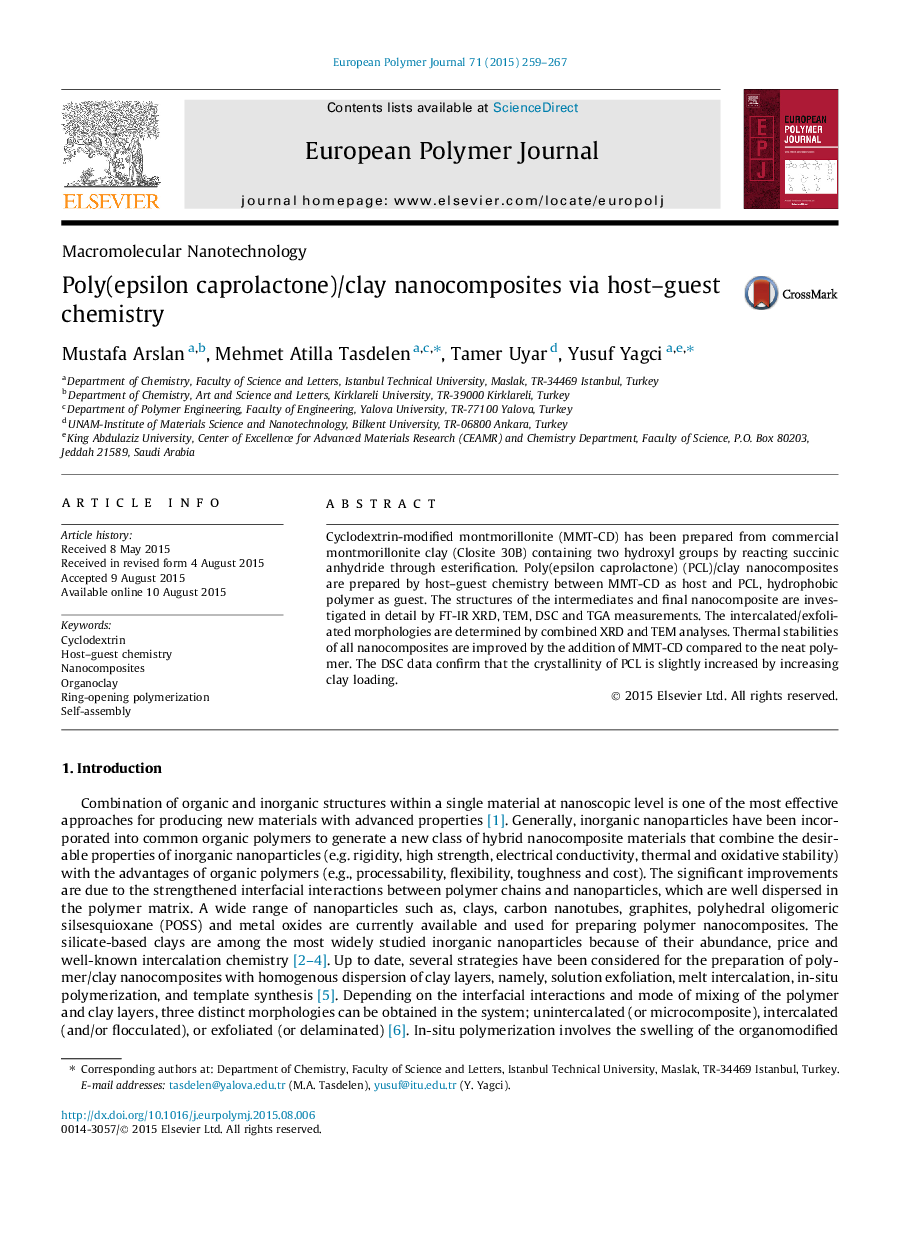| Article ID | Journal | Published Year | Pages | File Type |
|---|---|---|---|---|
| 1394851 | European Polymer Journal | 2015 | 9 Pages |
•Poly(epsilon caprolactone)(PCL)/clay nanocomposites were prepared by host–guest chemistry between cyclodextrin-modified montmorillonite as host and PCL, hydrophobic polymer as guest.•Spectroscopic and microscopic data demonstrated that mixed morphologies including intercalated layers with a non-uniform separation and exfoliated single layers isolated from any stacks were successfully attained.•The obtained nanocomposites exhibited better thermal stabilities compared to the neat polymer, thus proving the homogenous dispersion of the nanoclays in the polymer matrix.
Cyclodextrin-modified montmorillonite (MMT-CD) has been prepared from commercial montmorillonite clay (Closite 30B) containing two hydroxyl groups by reacting succinic anhydride through esterification. Poly(epsilon caprolactone) (PCL)/clay nanocomposites are prepared by host–guest chemistry between MMT-CD as host and PCL, hydrophobic polymer as guest. The structures of the intermediates and final nanocomposite are investigated in detail by FT-IR XRD, TEM, DSC and TGA measurements. The intercalated/exfoliated morphologies are determined by combined XRD and TEM analyses. Thermal stabilities of all nanocomposites are improved by the addition of MMT-CD compared to the neat polymer. The DSC data confirm that the crystallinity of PCL is slightly increased by increasing clay loading.
Graphical abstractFigure optionsDownload full-size imageDownload as PowerPoint slide
